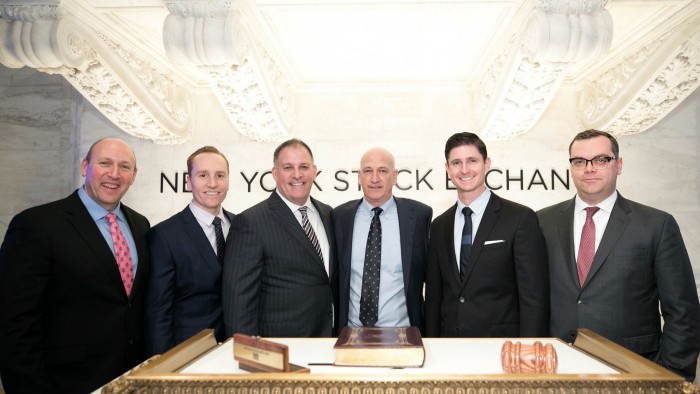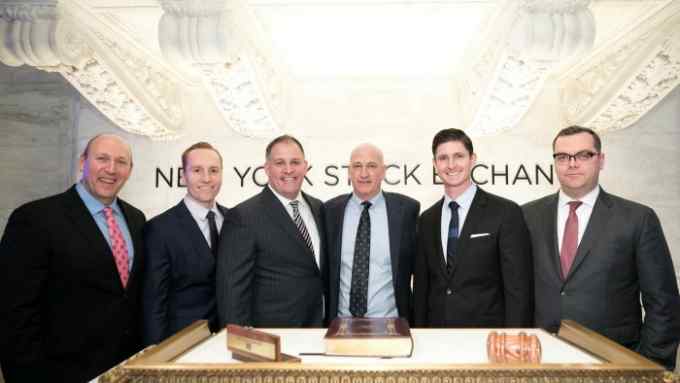Retail investors open to alternatives in the hunt for higher yields

Roula Khalaf, Editor of the FT, selects her favourite stories in this weekly newsletter.
Retail investors in the US are turning to hedge funds and private equity to boost returns, as persistently low interest rates and a crowded equities market have cramped the performance of stocks and bonds.
Assets under management in these so-called alternative assets which reached $10.3tn in 2019 among institutional investors globally, are forecast to hit $14tn by mid 2023, according to Preqin, a data provider. Recent regulatory guidance in the US that will expand retail investor access to alternatives — including allowing private equity to be included in 401(k) pension plans — is likely to add to this trend.
Yet many registered investment advisers in the US have so far steered clear of alternatives. Of the 300 advisers featured on this year’s FT Top RIAs list, less than half (128) have any client money invested in alternatives, with those firms allocating an average 7 per cent of assets.
Chicago-based Vivaldi Capital Management, however, is among a minority of firms bucking this trend in the belief that alternatives can play an important role in diversifying client portfolios — about 40 per cent of its $2.4bn in wealth management assets are invested in alternatives.
The company favours more conservative strategies within hedge funds, real estate, private equity and private credit, rather than the more esoteric investments such as commodities or art. “We’re not going to hit home runs. But we want to be able to stay in the game,” says chief executive David Sternberg. “We would much rather create a predictable stream of returns where they’re not as vulnerable to the markets.”
Mr Sternberg’s comfort with alternatives is rooted earlier in his career. After a 15-year stint at the Chicago Board of Options Exchange, he began investing in alternatives in 1996. In late 1999, he started a fund-of-funds managing about $350m. One of his first clients was Randy Golden, who would go on to be his co-founder at Vivaldi in the late 2000s.
Vivaldi is a fee-only fiduciary adviser and does not earn commissions from alternatives funds for client investments. But for other advisers that do charge commissions, steering clients towards alternative funds can be lucrative.
Andrew Lindblom, director of wealth management at Vivaldi, says clients are frustrated by an expensive stock market and ultra-low rates. “Advisers building portfolios for clients are also unhappy with their options in traditional asset classes and are concerned about the return potential of stocks and bonds over the next few years,” he adds.
An in-house research team of nine sits at the core of Vivaldi’s operation, vetting investment managers and handling all operational due diligence. Once they approve a fund, it is added to an investment vehicle that pools partner and client assets.
Members of the research team also frequently join client calls with the company’s 15 financial advisers to help explain a particular strategy. This is intended to help demystify alternatives and make them accessible to a broader swath of clients.
But Vivaldi notes these strategies are not for everyone. One issue is liquidity. Alternatives cannot be traded as easily as a stock or a bond. Once money is committed, it can be tied up for years or even decades.
Tom Kehoe, managing director and global head of research and communications for the Alternative Investment Management Association, warns that if an investor is forced to sell an alternative asset quickly, it will probably be at a steep discount. Nevertheless, he adds, alternatives can offer good diversification.
“The average hedge fund was able to withstand that market correction better than equities did in the first quarter,” he says, referring to the volatility this year caused by the Covid-19 pandemic. The MSCI World Index lost more than 20 per cent of its value in the first quarter of the year, Mr Kehoe says, while the average hedge fund lost 4-6 per cent.
High fees and high minimum sums required for investment are common concerns with alternatives. Many private equity funds, for example, require a minimum investment of $1m, making it impossible for an individual investor to gain access. But aggregated allocations — where money is pooled across the advisory firm — enable Vivaldi and firms with similar vehicles to negotiate better fee structures, meaning the client can get a stake in the fund at a lower cost.
As alternatives rise in popularity, other advisers have begun “dabbling” in the space, says Michael Peck, Vivaldi’s co-chief investment officer. However, he urges them not to skimp on manager research. “Should there really be 11,000 hedge funds in the country? The answer is no. There aren’t that many really talented people that can demand to charge those higher fees,” he says.
“When things go bad, you end up realising who the mediocre and sub-par managers are,” he says. “You just have one bad experience with that and you don’t really want to go back.”

Comments